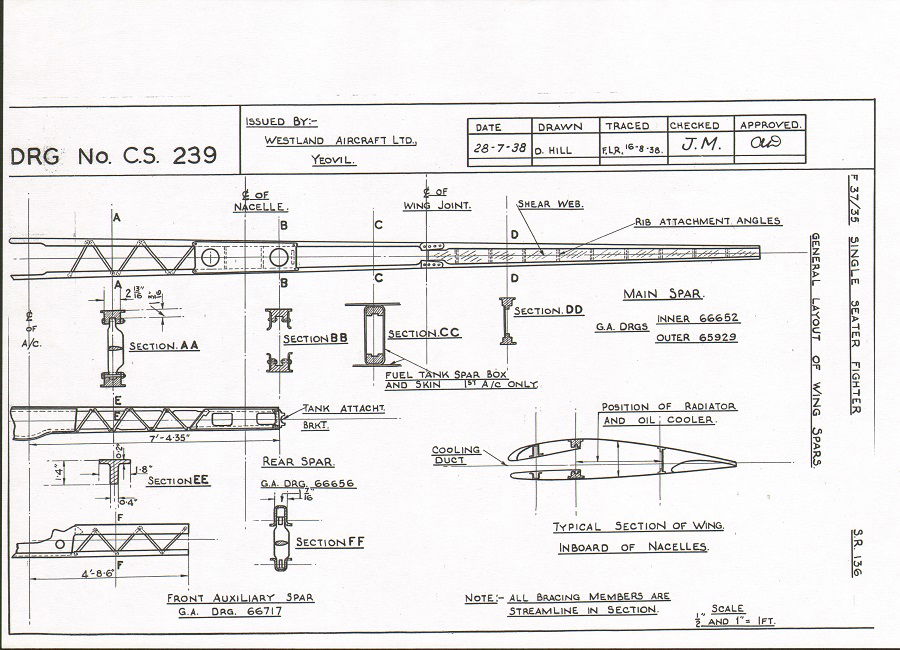Getting it Right - and the Value of Aviation Archaeology
Over ten years ago, renowned rebuilder of Historic aircraft Steve Vizard offered to help the project in any way he could. This included the loan of substantial wreckage from Whirlwind P6966 recovered by Steve and team way back in 1979, when Aviation Archaeology was at its peak, though with some questioning its value.
Whilst drawing up the CAD model from surviving Westland drawings, Gunnar Olsen noticed some discrepancies around the wing centre section that couldn't be easily explained. Discussion with Pete Smith, our Chief Engineer, showed the model produced from the drawings to not be constructible. There was clearly something amiss.

Fortunately we had P6966, specifically the spars behind the nacelles, and a laser scan of these parts by our 3d printing expert Jamie of Merlins R Us (tech that would be unimaginable in 1979) produced results that did not match the drawings.
It turned out that the spar depicted in the surviving GA was an early, superseded design, and by the time of the first production aircraft (which just happened to be P6966) there was a new, slightly different spar. That has now been incorporated into our model. We are confident that the rest of the model is correct from the lack of this kind of discrepancy between sources.
Of course, previous model kits and scale drawings have been based on the GAs surviving from Westland - so this new information will have the side effect of rendering them all slightly 'wrong' in that the wing profile is slightly 'off'. Our Whirlwind, however, will be 100% accurate. If ever there was a validation of the practice of Aviation Archaeology, this has to be it.